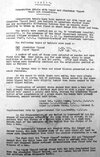Hi all,
I hope the knowledgeable collectors out there can help me. I’ve always believed and read (e.g https://talesfromthesupplydepot.blog/2017/09/20/mk-vii-303-rounds/0) that one purpose of the Aluminium tip of the Mk VII bullet was to encourage it to tumble when it hit a target. I’ve searched the Small Arms Committee records (thanks to the wonderful work by the Vickers MG research group) but I haven’t found anything that explicitly says that. Can anyone point me to a primary source that backs it up - or is it a myth?
I hope the knowledgeable collectors out there can help me. I’ve always believed and read (e.g https://talesfromthesupplydepot.blog/2017/09/20/mk-vii-303-rounds/0) that one purpose of the Aluminium tip of the Mk VII bullet was to encourage it to tumble when it hit a target. I’ve searched the Small Arms Committee records (thanks to the wonderful work by the Vickers MG research group) but I haven’t found anything that explicitly says that. Can anyone point me to a primary source that backs it up - or is it a myth?

